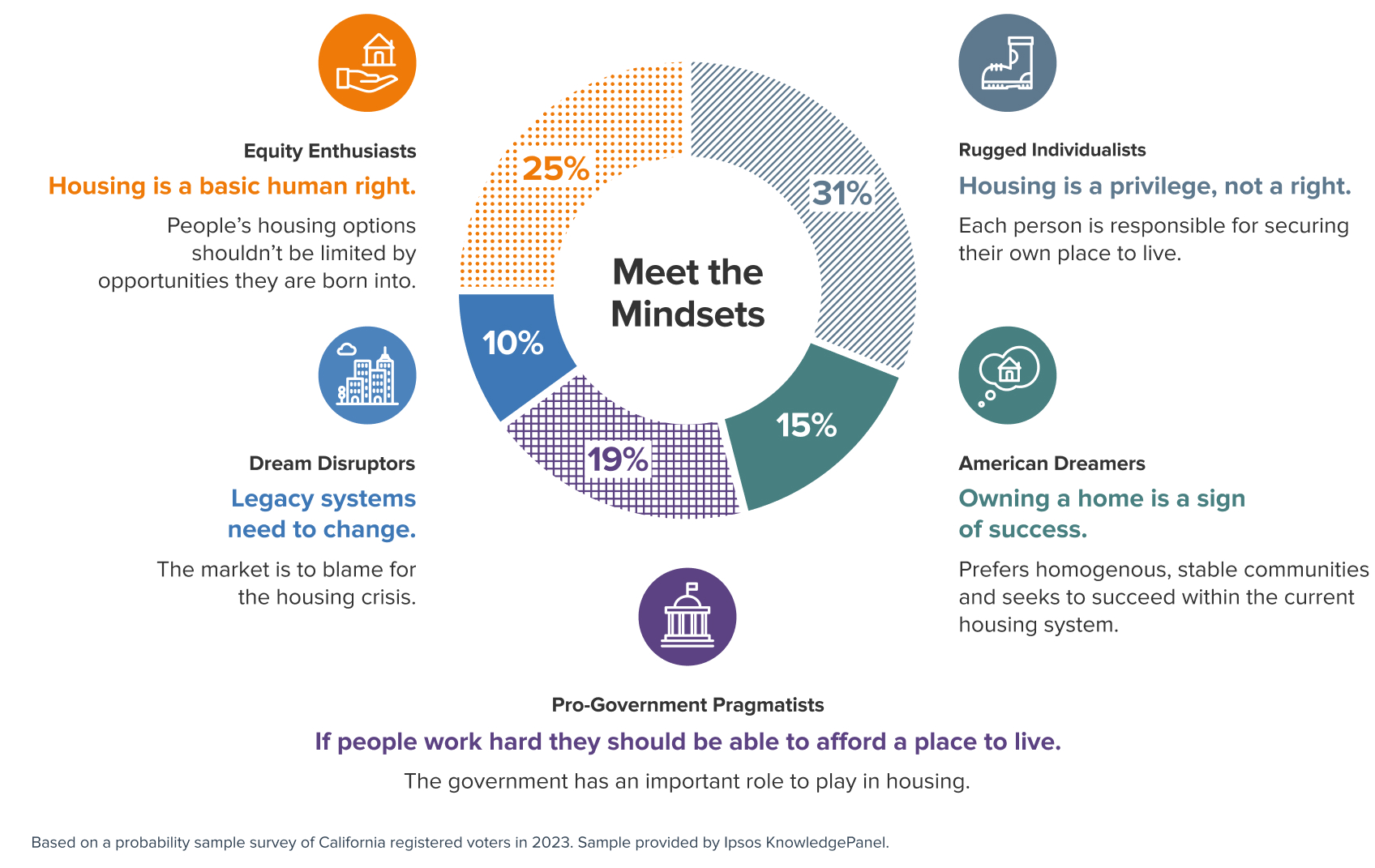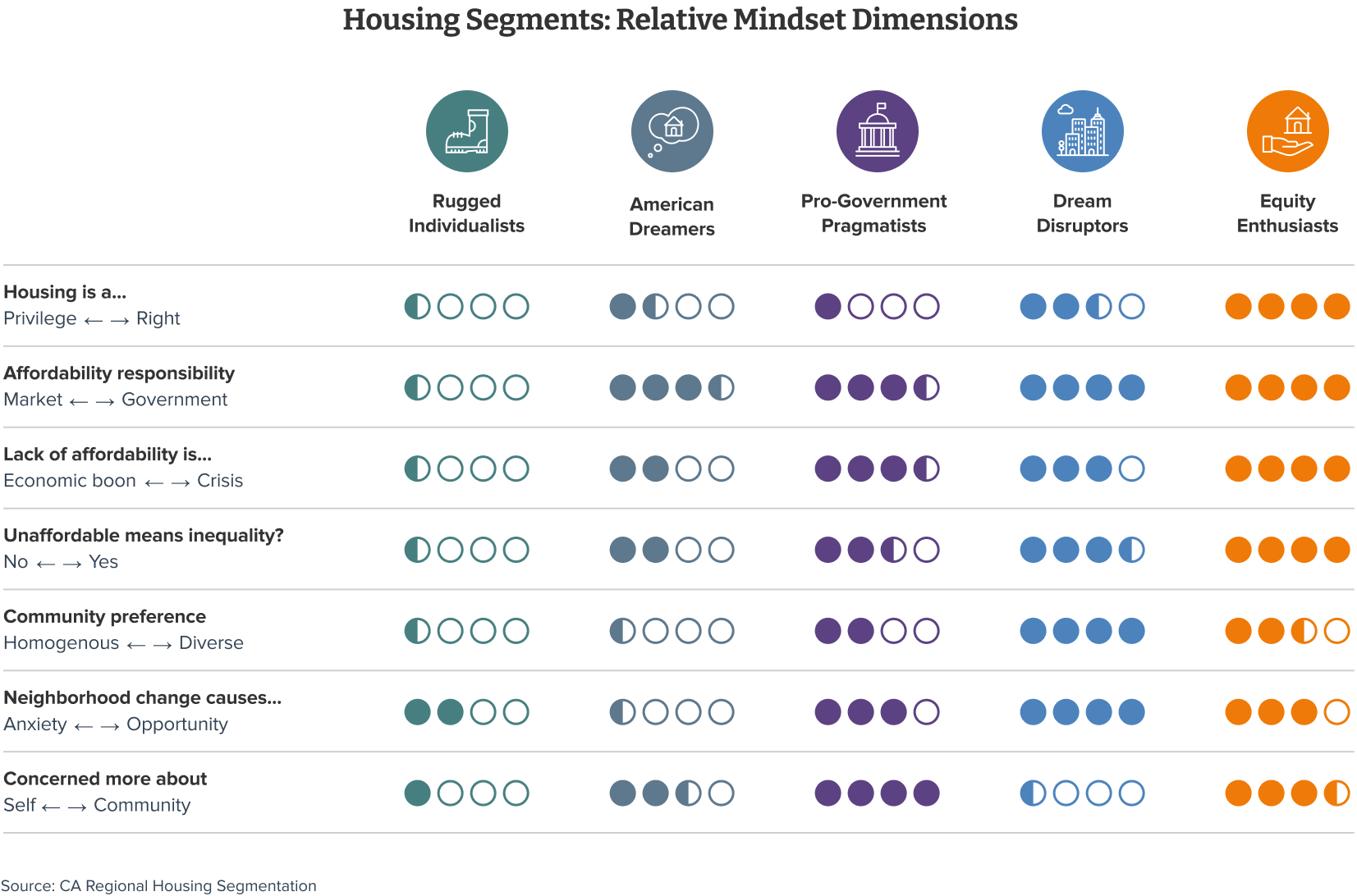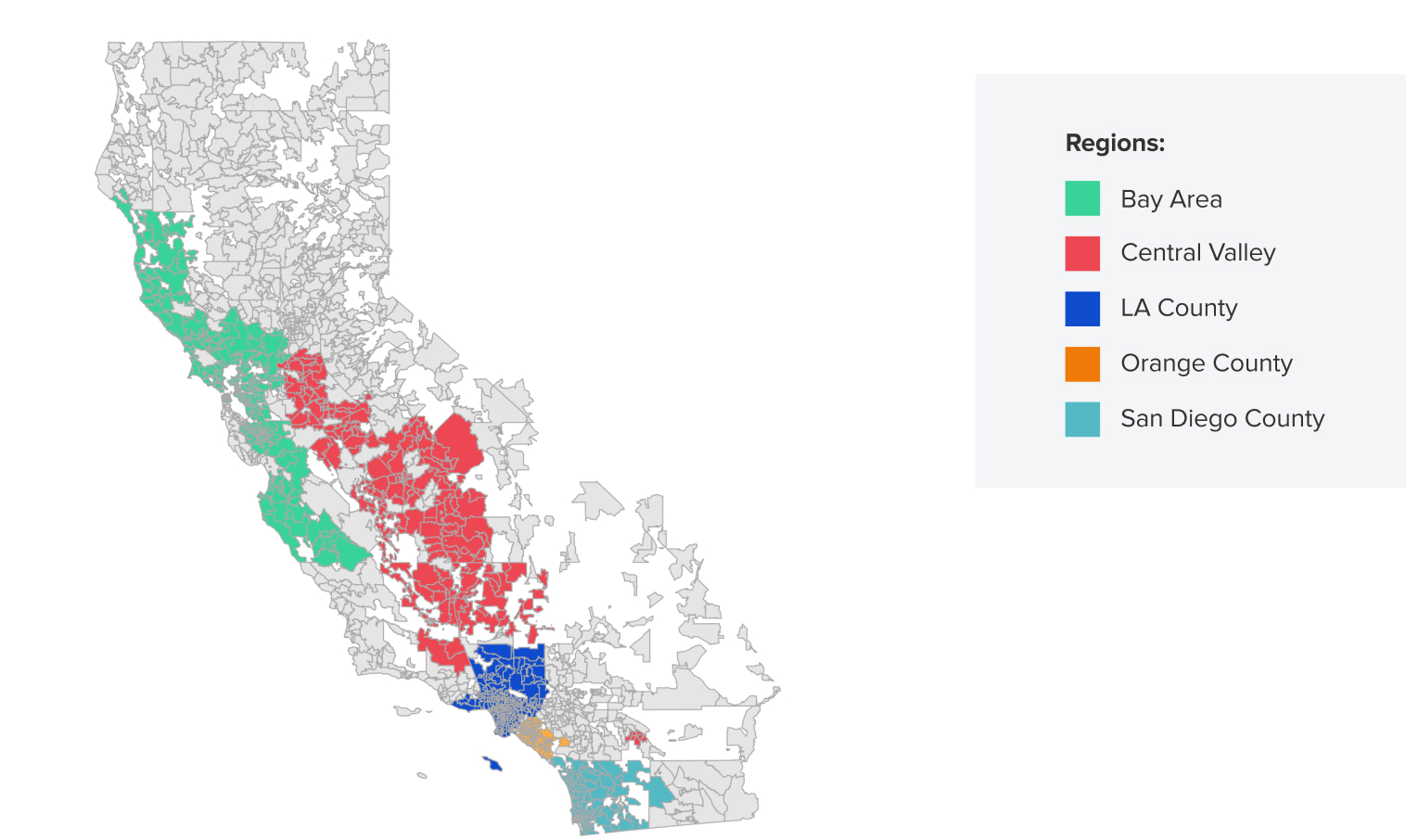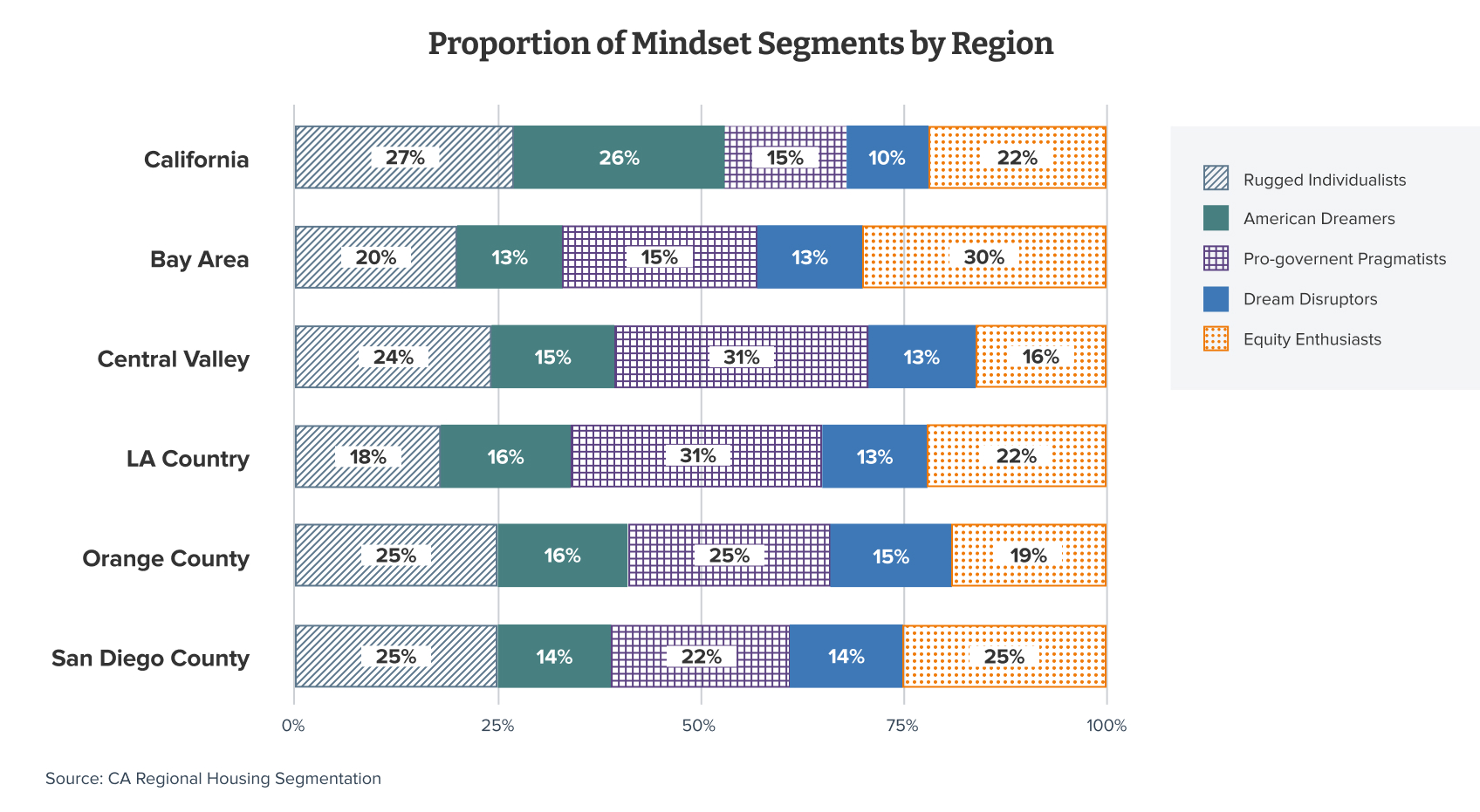By understanding the perceptions and worldviews of our audiences, advocates can more effectively shape messages to persuade and engage. Deep research into the values, attitudes, and beliefs that California voters hold about housing offer advocates a fresh, more nuanced, understanding of their audiences.
Audience research surfaced five distinct mindset segments that describe California voters’ ideas on housing affordability:

Values-based Segmentation
California voters hold various beliefs about housing — and these beliefs transcend the traditional political identities of party affiliation and demographic identities of gender, race, ethnicity, or class. This is important for advocates who may be accustomed to digesting audience research through these more familiar lenses, or through the political targeting lenses of base/persuadables/opposition.
Mindset segmentation methodology is values-based, meaning that voters are grouped into mindsets based on their shared values rather than geographic and demographic identities. We identified several dimensions related to values, motivations, and attitudes that may simultaneously shape the stories Caliornians hold about housing including what caused the housing crisis and how best to solve it. Because values-based segmentations cluster the population based on how similar they are on the dimensions, this method may provide a clearer roadmap for organizations to connect to their public.
The dimensions include:
- Housing is a privilege vs. housing is a right
- The market is best suited to guide the housing market vs. the government should intervene in the housing market
- Lack of affordable housing is good for the economy vs. it is a crisis
- Lack of affordable housing is not related to inequality vs. lack of affordable housing is indicative of inequality
- Preference for a more homogenous community vs. a more diverse community
- Neighborhood change is a cause of anxiety vs. an opportunity
- Concern more about the self vs concern more about the community
Below is a graphic demonstrating how the different dimensions show up in each housing mindset.

Values across segments
What the mindset segmentation further indicates is that while California voters can agree there’s a serious housing problem, they are not aligned on the source of the problem or on the solutions to address it. Equity Enthusiasts and Dream Disruptors see California’s housing crisis as a systemic issue demanding government solutions, whereas American Dreamers see it as an individual problem that the government can help address. Pro-Government Pragmatists are conflicted as to whether it’s a systemic or individual problem, but they believe that government is part of the solution. Rugged Individualists, meanwhile, see it as an individual problem best addressed via market solutions.
Advocates can use this understanding of how Californians think about and approach housing when they are working to reach a broad public. This means that advocates have an opportunity to step in to frame the problem and pose solutions. By uniting Californians with a shared narrative on housing, advocates have an opportunity to create a winning coalition for reforms.
Regional Segmentation Breakdown

In 2023 we expanded our segmentation analysis in two ways. First, we looked at the general adult population (not just registered voters), and second, we looked at the proportion of segments in five different regions of California. This can help organizations who work locally understand the public they are communicating with and working to engage.
Proportion of Mindset Segments by Region

Methods
The regional segmentation analysis used mail-to-web address based sampling. Sampling was conducted by SSRS between November 14, 2022 -February 8, 2023 in five regions: Bay Area (N=1,701), Central Valley (N = 1,638), LA County (N = 1,250), Orange County (N = 1,525), San Diego County (N = 1,642).

